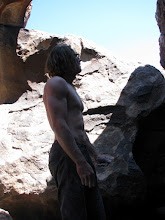

I’m not sure why Marie-Rose is so special to the forest, aside from an arbitrary breakthrough in bouldering difficulty. I found her movement on our last morning in Fontainebleau, at my favorite area in the forest… her memory is a clear reflection in my mind. Ultimately, a testament of French machismo... and a really great boulder problem.
---
Mary Rose
From Wikipedia, the free encyclopedia
The sole known image of the Mary Rose, depicted in the Anthony Roll
The Mary Rose was an English Tudor carrack warship and one of the first to be able to fire a full broadside of cannons. The Mary Rose was well equipped with 78 guns (91 after an upgrade in 1536) and was the pride of the English fleet. Built in Portsmouth, England (1509–1510) she was thought to be named after King Henry VIII's sister Mary and the rose, the Tudor emblem. She was one of the earliest purpose-built warships to serve in the Royal Navy; it is thought that she never served as a merchant ship. She displaced 500 tons (700 tons after 1536), was 38.5 m long and 11.7 m beam and her crew consisted of 200 sailors, 185 soldiers, and 30 gunners. After serving for over thirty years, she sank in the Solent during an engagement with the French fleet on 19 July 1545. The surviving section of the ship was raised in 1982 and is now on display in Portsmouth Historic Dockyard along with an extensive collection of well preserved artefacts.
From Wikipedia, the free encyclopedia
The sole known image of the Mary Rose, depicted in the Anthony Roll
The Mary Rose was an English Tudor carrack warship and one of the first to be able to fire a full broadside of cannons. The Mary Rose was well equipped with 78 guns (91 after an upgrade in 1536) and was the pride of the English fleet. Built in Portsmouth, England (1509–1510) she was thought to be named after King Henry VIII's sister Mary and the rose, the Tudor emblem. She was one of the earliest purpose-built warships to serve in the Royal Navy; it is thought that she never served as a merchant ship. She displaced 500 tons (700 tons after 1536), was 38.5 m long and 11.7 m beam and her crew consisted of 200 sailors, 185 soldiers, and 30 gunners. After serving for over thirty years, she sank in the Solent during an engagement with the French fleet on 19 July 1545. The surviving section of the ship was raised in 1982 and is now on display in Portsmouth Historic Dockyard along with an extensive collection of well preserved artefacts.






No comments:
Post a Comment